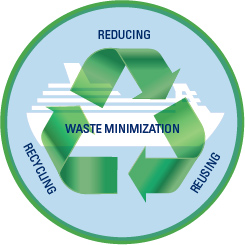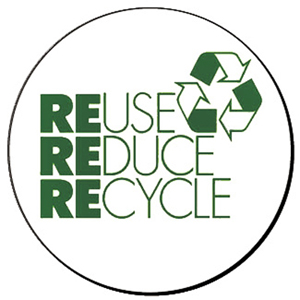Recycling Lives Services: Changing Waste right into Valuable Resources
Recycling Lives Services: Changing Waste right into Valuable Resources
Blog Article
Exploring Various Kinds Of Waste in Modern Waste Management Solution
The modern landscape of waste management involves browsing a complicated range of waste kinds, each needing specialized handling and disposal approaches to alleviate ecological influences. Community solid waste, dangerous waste, digital waste, and organic waste each existing unique difficulties and possibilities for source healing. Cutting-edge services such as wise waste containers and waste-to-energy technologies are emerging as important devices in boosting efficiency and sustainability. Understanding these waste kinds is important for fostering public understanding and encouraging active involvement in lasting practices. What methods can effectively attend to these varied kinds of waste while promoting a round economy?
Local Strong Waste
Local solid waste, usually described as home trash or rubbish, incorporates a variety of disposed of materials generated by residential, commercial, and institutional sources within a town. This waste stream usually includes things such as product packaging, food scraps, backyard trimmings, paper, plastics, fabrics, and disposed of house items. The management of metropolitan strong waste is a critical component of metropolitan preparation and public health and wellness, requiring effective collection, transportation, and disposal systems.
Efficient waste management systems are developed to decrease ecological influence while making the most of resource healing. Composting organic waste, such as food scraps and backyard trimmings, not just decreases landfill usage yet likewise generates useful soil modifications.
Municipalities have to additionally address the financial and logistical obstacles connected with waste management. Executing pay-as-you-throw systems, improving public understanding, and purchasing innovation can substantially boost waste diversion prices. By incorporating these methods, districts can cultivate sustainable communities, minimize greenhouse gas emissions, and conserve natural deposits.
Contaminated Materials

Efficient hazardous waste management includes a number of critical actions: recognition, therapy, partition, and disposal. Recognition entails the category of waste based upon its harmful properties. Partition guarantees that unsafe materials are kept independently from non-hazardous waste to prevent cross-contamination. Therapy approaches, such as chemical neutralization, incineration, and stabilization, are employed to lower the poisoning, volume, or wheelchair of the waste. Disposal choices, including secure garbage dumps and below ground storage space, are picked to ensure long-lasting containment.
Regulative structures, such as the Resource Conservation and Recuperation Act (RCRA) in the USA, offer standards and criteria for dangerous waste administration. Adherence to these policies, combined with developments in waste treatment modern technologies, is necessary in reducing the dangers connected with contaminated materials.
Electronic Waste
Digital waste, generally referred to as e-waste, represents a rapidly growing obstacle in waste management systems around the world. This kind of waste incorporates discarded electronic devices and devices such as mobile phones, computer systems, televisions, and other electronic home appliances. The rapid rate of technological advancement, paired with decreasing item life expectancies and customer need for the most recent gadgets, has exponentially raised the quantity of e-waste generated annually.
E-waste is especially bothersome due to its complex composition, often having dangerous compounds like lead, cadmium, and mercury, which posture significant ecological and health and wellness dangers if not correctly handled. Alternatively, e-waste additionally includes useful materials such as copper, silver, and gold, which can be recouped and recycled. The twin nature of e-waste-- both dangerous and useful-- requires specific handling, recycling, and disposal procedures.
Effective e-waste administration includes stringent governing frameworks, durable collection systems, and progressed reusing modern technologies. Public recognition and involvement are vital, as incorrect disposal techniques, such as prohibited unloading and casual recycling, aggravate ecological contamination and carcinogen. As a result, improving e-waste monitoring techniques is vital for minimizing environmental effect and recovering useful sources in a progressively electronic globe.

Organic Waste
Organic waste, consisting of kitchen area scraps, yard trimmings, and agricultural deposits, stands for a substantial portion of the worldwide waste stream. This kind of waste is blog eco-friendly, indicating it can be broken down by microorganisms into easier organic substances. In spite of its capacity for natural decomposition, incorrect administration of organic waste can bring about negative environmental influences, consisting of the emission of greenhouse gases such as methane, which contribute to climate adjustment.
Reliable management of organic waste is essential for reducing these environmental effects (recycling lives services). Composting is a commonly adopted approach, transforming organic waste right into nutrient-rich compost that can enhance dirt health and agricultural productivity. Furthermore, anaerobic digestion is an emerging modern technology that transforms organic waste right into biogas, a renewable power source, and digestate, which can be utilized as plant food
Municipalities and waste administration entities have to execute robust natural waste collection and treatment programs to maximize the benefits of these processes. Public education and learning projects can likewise play a crucial role in encouraging families and services to separate natural waste from other kinds of waste. By prioritizing the management of organic waste, societies can decrease landfill usage, reduced greenhouse gas exhausts, and develop useful results for agricultural usage.

Cutting-edge Waste Monitoring
In the realm of waste administration, cutting-edge techniques are changing exactly how cultures handle their refuse, going for sustainability and efficiency. These advancements encompass a series of modern technologies and practices that enhance recycling rates, reduce garbage investigate this site dump dependence, and reduced ecological effect. One noticeable innovation is the application of clever waste containers outfitted with sensors that keep track of fill levels and maximize collection courses. This not just minimizes fuel consumption however likewise reduces greenhouse gas emissions.
An additional noteworthy growth is the fostering of waste-to-energy (WtE) technologies. By converting non-recyclable waste right into useful power through procedures such as incineration and anaerobic food digestion, WtE reduces garbage dump worry and provides a renewable power source. In addition, advancements in chemical recycling permit the break down of complicated plastics into their initial monomers, allowing the creation of brand-new, high-grade plastic products.
Furthermore, the circular economic climate model is getting traction, highlighting the layout of products and systems that prioritize reusability and resource performance. This alternative strategy motivates sectors to reduce waste generation from the start. With these innovative techniques, modern-day waste monitoring systems are not only addressing the instant difficulties of garbage disposal however additionally paving the method for an extra lasting future.
Verdict
A detailed understanding of metropolitan strong waste, harmful waste, electronic waste, and natural waste, coupled with the application of ingenious waste administration solutions, is essential for mitigating environmental influences. Incorporating technologies such as clever waste containers and waste-to-energy systems can improve efficiency and sustainability. Effective waste administration strategies not only foster resource healing but also promote public understanding and engagement, inevitably adding to the development our website of a round economy.
The modern landscape of waste administration includes navigating a complex range of waste kinds, each needing specialized handling and disposal methods to reduce ecological effects. Municipal solid waste, dangerous waste, electronic waste, and organic waste each present unique obstacles and opportunities for source healing.Digital waste, commonly referred to as e-waste, stands for a rapidly expanding difficulty in waste management systems around the world. With these ingenious methods, modern waste monitoring systems are not only dealing with the instant difficulties of waste disposal however likewise paving the means for a more lasting future.
A comprehensive understanding of community strong waste, unsafe waste, digital waste, and organic waste, combined with the application of ingenious waste monitoring options, is crucial for reducing environmental impacts. (recycling lives services)
Report this page